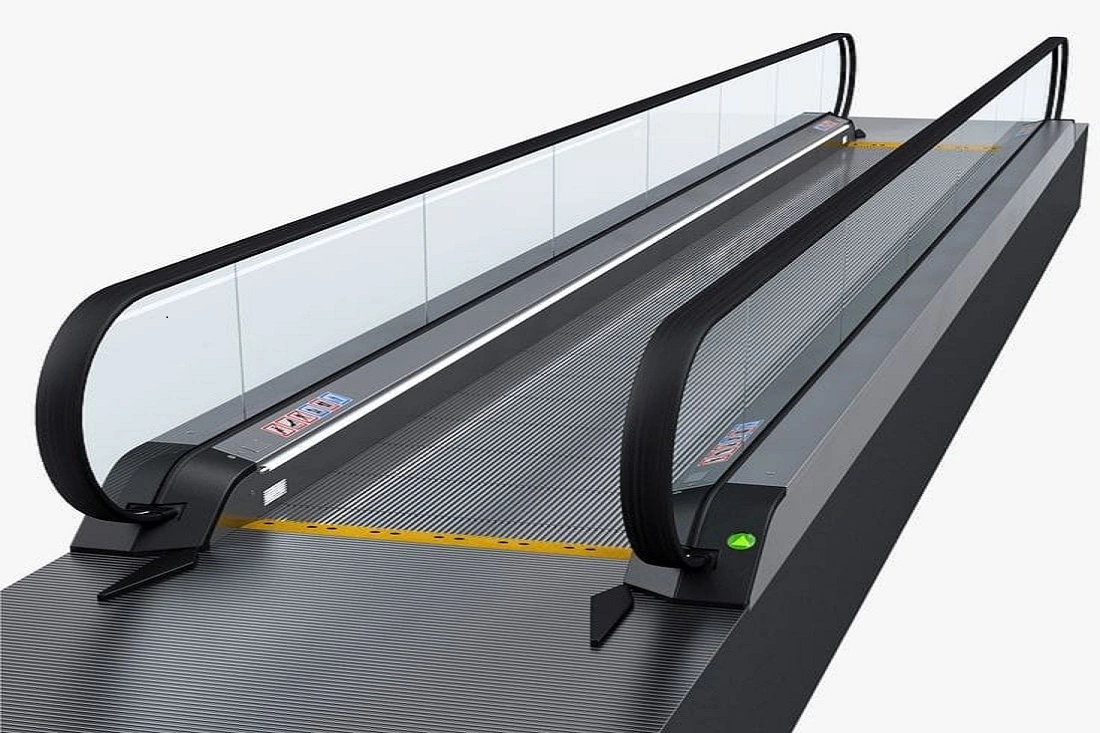
INFORMATION before INSTALLING MOVING walkways
INFORMATION before INSTALLING MOVING walkways
The following points should be considered when installing a walkway and lane in projects:
1. Elevation
The grade height is the difference between the two floor levels of a building, calculated from the finished surface elevation of the lower floor to the finished surface elevation of the upper floor.
2. The angle of inclination of the walkway
Walkways are divided into two categories based on their angle:
2.1 Horizontal walkway.
This type of moving walkway is made with an angle of inclination between 0 and 6 degrees and is used for long horizontal destinations.
2.2 Inclined moving walkway.
This type of escalator is used to carry passengers between floors and can be selected with an inclination angle of 10, 11 or 12 degrees.
3. moving walkway width
The standard width of the moving belt is divided into two categories: 800 and 1000 millimeters. The total width of the device corresponding to each track width is 1400 and 1600 millimeters respectively, and the total width of the construction pit corresponding to each track width is 1460 and 1660 millimeters respectively.
4. horizontal length (L length)
The horizontal length is determined according to the elevation after selecting the appropriate angle according to the formula for each angle. The horizontal length is equal to the distance between the two building beams on the lower and upper floors.
5. ceiling clearance.
An opening of suitable width and length must be provided at the top floor for the installation of a moving walkway. The width of the opening shall be equal to the width of the common escalator(s) and the length of the opening shall be designed so that the vertical height between pallets under the existing ceiling is never less than 2.30 meters. This vertical height must be taken into account to ensure safe headroom for passengers.
NOTE: To calculate the length of the ceiling opening, the thickness of the top slab is required.
6. Drilling of boreholes
A vestibule of suitable width and length should be provided on the ground floor for the installation of the running belt. The width of the walkway of the vestibule is equal to the total width of the escalator and the length should be designed so that the bottom of the truss can be located below the floor surface. This will result in the walkway floor slab being flush with the finish floor surface.
7. Middle support
For walkways with long horizontal lengths, at least one center support should be provided to prevent deflection in the center.
8. Nominal speed of the moving walkway
According to EN 115-1:2017, the nominal speed of an escalator with an inclination angle greater than 6 degrees should not exceed 0.5 m/s, and the nominal speed of an escalator with an inclination angle between 0 and 6 degrees should not exceed 0.75 m/s.
The normal speed for inclined moving walkways is 0.5 m/s and the recommended nominal speed for horizontal moving walkways is 0.65 m/s, especially when moving walkways carry luggage carts.
9. Loads acting on the building structure
The loads exerted by the moving belts on the building structure include the dead weight of the moving belts, the live load and the dynamic load. The safety margin is then calculated and added to the total load. The final result is applied to 4 locations.
In high-lying moving belts, one or two center supports should be provided to prevent deflection in the middle section. The third and fourth loads are applied to the center supports.
”Amada TECH is a leading Turkish elevator company with advanced technology and highest quality in elevator and escalator manufacturing. It is a modern and professional elevator manufacturer integrating design, research and development, engineering, production, sales, installation and service into a single unit.

Sorry, the comment form is closed at this time.